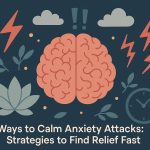Enzyme-Linked Immunosorbent Assay (ELISA) is known as the foundation method in life science research, diagnostics, and drug development. From quantifying cytokines, hormones, or disease biomarkers, the reliability of your data is not limited to your experimental design but also to the ELISA kit protocol you select.
However, confusion arises when choosing the right kit from the hundreds of options available on the market. If you are also facing a similar situation, you can consider the following seven factors before committing to an ELISA kit protocol.
1. Assay Sensitivity and Dynamic Range
Sensitivity determines the lowest concentration of your target analyte that the kit can reliably detect, which is often reported as the limit of detection (LOD). If you’re working with low-abundance biomarkers (e.g., IL-10 in serum or early-stage cancer antigens), a kit with sub-picogram/mL sensitivity is non-negotiable.
Equally important is the dynamic range—the span between the lowest and highest detectable concentrations. A wide dynamic range reduces the need for sample dilution, saving time and preserving sample integrity. Always verify that the kit’s range aligns with your expected analyte levels for your specific sample type (e.g., plasma, cell lysate, saliva).
2. Specificity and Cross-Reactivity
Antibody cross-reactivity can result in false positives and incorrect readings. Reputable manufacturers offer cross-reactivity data against related proteins or isoforms.
For example, if you’re measuring human TNF-alpha, ensure the kit doesn’t cross-react with mouse TNF-alpha if you’re using xenograft models. You can always check whether the capture and detection antibodies are monoclonal or polyclonal. For clinical or translational work, monoclonal-based kits are generally preferred.
3. Sample Type Compatibility
Not all ELISA kits perform equally well across sample matrices. A protocol validated only in buffer may fail in complex biological fluids, such as serum, due to matrix effects (e.g., proteases, lipids, or heterophilic antibodies).
You can look for kits that have a list of validated sample types and ideally, include spike-and-recovery and linearity-of-dilution data in those matrices. If your sample type isn’t listed, contact the manufacturer for validation support before purchasing.
4. Protocol Simplicity and Hands-On Time
Time and error are increased by the multiple washing and incubation steps involved in traditional ELISA procedures, which can take four to six hours. This can slow you down if you have a small staff or are running a lot of samples.
Look for simpler, faster formats like no-wash or rapid ELISA kits. For example, AAA BioTech’s no-wash kits give reliable results in under 90 minutes with just one step. Fewer steps mean less hands-on time, less mistakes, and more consistent results—especially when you’re processing lots of samples.
5. Reproducibility and Precision
Research requires reproducibility. The intra-assay and inter-assay coefficients of variation (CV%) for the kit should be examined; ideally, both should be less than 10%. High CVs indicate poor lot-to-lot consistency of reagents.
Also, check if the manufacturer performs thorough quality control (e.g., testing every lot against reference standards) and provides lot-specific validation data. Reputable suppliers will share this upon request.
6. Validation and Regulatory
Make sure your research satisfies the set standard if it supports clinical assay development or regulatory submissions (such as IND-enabling studies). Some manufacturers adhere to GMP-like procedures or provide documentation that aligns with CLIA or ISO guidelines, even though most research-use-only (RUO) kits are not FDA-cleared.
With the help of diagnostic developers, you can learn if they have IVD-ready formats or CE-marked kits. Using standardized protocols improves the results of peer reviews and your methodology section, even in basic research.
7. Technical Support and Documentation
Even the best kit can fail. And that’s when questions come:
- Does the manufacturer offer responsive technical support?
- Can they troubleshoot unexpected results or provide protocol optimization tips?
A documentation, which includes detailed protocols, troubleshooting guides, and example standard curves, saves hours of guesswork.
Conclusion
It’s easy to choose the cheapest kit—but failed runs, repeated experiments, or data that can’t be reproduced cost far more in the long run. A well-designed, well-supported ELISA kit saves time, samples, and stress—and gives you results you can trust.
The best path to discovery isn’t the fanciest protocol—it’s the simplest one that works reliably, every time.
Lynn Martelli is an editor at Readability. She received her MFA in Creative Writing from Antioch University and has worked as an editor for over 10 years. Lynn has edited a wide variety of books, including fiction, non-fiction, memoirs, and more. In her free time, Lynn enjoys reading, writing, and spending time with her family and friends.















